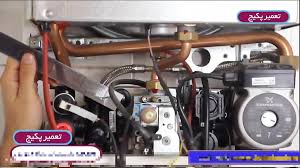A press break is your sophisticated busbar machine of your manual break used in your metal sheet bending needs. In terms of the application of force, a press break can be categorized as mechanical, pneumatic, hydraulic and servo-electric.
Mechanical press breaks were used until the 1950’s in the advent of more sophisticated technology which includes computerization of machines. This development led to the creation of hydraulic machines and hydraulic press breaks started to become popular. Hydraulic breaks are reliable, accurate, use little energy and are safer.
More technological advancements paved way for pneumatic and servo-electric presses which are used for bending metals with lower tonnage. Pneumatic press brakes are commonly used in the industrial sites where production efforts are not that high. On the other hand, servo-electric presses are designed for high precision because of their programmable working speed.
There are several things that you need to consider when buying a press break, one of which is the size and capacity. You must have an idea as to how large is the largest material that you will be dealing with and multiply it by two or three times.
A small press break is capable of bending metals under 25 tons (tons of pressure per meter of length). Thus, if you will be working with hundreds of tons of raw materials with more that 10 feet of working length, then go for the large models.
If you are a neophyte in the business, consult technical people who can give you an idea of what you will be up against before making your final purchase.
Other than bending metals, another common fabricating process is cutting or shearing metal sheets using the shears. The advantages of the shears are its ability to cut flat metal sheets in a straight line and its flexibility in making relatively small cuts. This is made possible because the blades of the shears can be mounted in a certain angle that reduces the force required.
Materials that are commonly sheared are aluminum, brass, bronze and steel. Shearing can be done on metal sheets, strips, bar, plate and even angle stock.
There are several kinds of shears available in the market, depending on you specific need. These are alligator shears, bench shears, guillotine, power shears, throatless shears and tin snips.
Learn the specific uses of these machines, versus what you really need. A good fit between your needs and the capability of your equipment spells success of higher productivity and lower costs. Mismatched equipment for the type of work needed will only entail additional expenses and will slow down your production level as well.
It is wise to invest in equipment with a capacity that is greater than your need. This will allow you room for future expansion without necessarily buying more tools. Safety is also important. Make sure that your operator knows exactly how the machine runs and what buttons to press when it goes out of hand to contain the damage.

